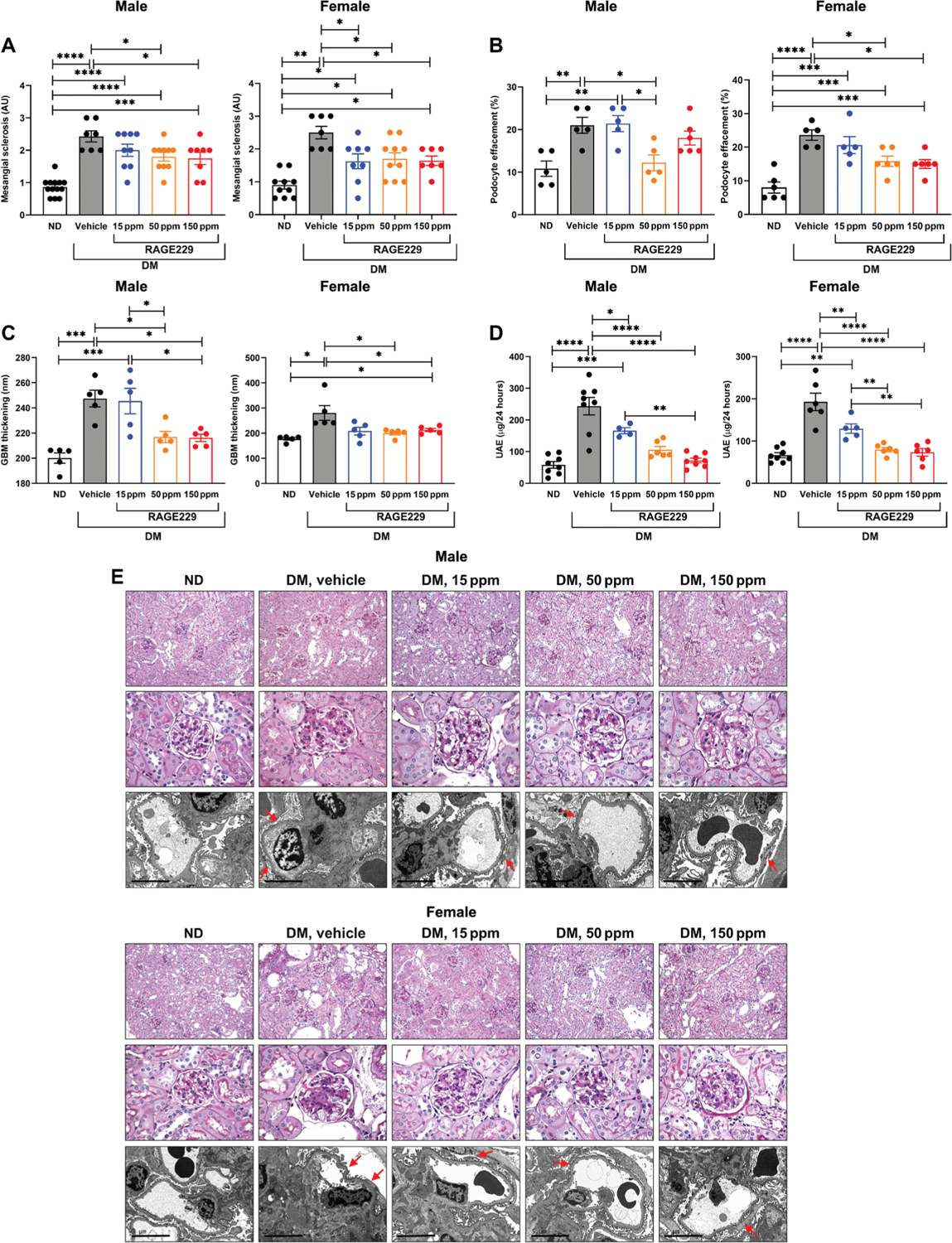Fig. 6. Treatment with RAGE229 protects from mesangial sclerosis, podocyte effacement, GBM thickening, and UAE in male and female type 1–like diabetic C57BL/6J mice.

Diabetic animals (DM) were further randomized to either receive one of three concentrations (15, 50, and 150 ppm) of RAGE229-containing chow or vehicle chow (vehicle) and euthanized after 6 months of STZ-induced hyperglycemia. Non-diabetic (ND) control animals only received vehicle chow. (A) Mesangial sclerosis score. For male mice, statistical significance was determined by ANOVA with post hoc Tukey’s test after passing the Shapiro-Wilk test for normality. For female mice, the data did not pass the Shapiro-Wilk test for normality, and the Wilcoxon rank sum test was used. (B) Podocyte effacement. For both male and female mice, statistical significance was determined by ANOVA with post hoc Tukey’s test after passing the Shapiro-Wilk test for normality. (C) Thickness of the GBM. For male mice, statistical significance was determined by ANOVA with post hoc Tukey’s test after passing the Shapiro-Wilk test for normality. For female mice, the data did not pass the Shapiro-Wilk test for normality, and the Wilcoxon rank sum test was used. (D) Measurement of UAE after 6 months of diabetes. For both male and female mice, statistical significance was determined by ANOVA with post hoc Tukey’s test after passing the Shapiro-Wilk test for normality. (E) Representative images of periodic acid–Schiff–stained sections (top row, ×200 magnification; middle row, ×600 magnification) and electron microscopy images (bottom row, ×10,000 magnification; scale bars, 5 μm) of kidney cortex tissue in male and female mice. Arrows indicate examples of podocyte effacement. The number of mice per group is indicated in each figure. Data are presented as means ± SEM. *P < 0.05, **P < 0.01, ***P < 0.001, and ****P < 0.0001.
